To install an aux in car, locate the auxiliary jack on your car’s stereo system and connect one end of the auxiliary cable to it and the other end to your device. Introducing an aux in car allows you to play your own music through the car’s speakers, providing a personalized auditory experience while commuting.
By simply connecting your device to the car’s stereo system via an auxiliary cable, you can easily enjoy the music, podcasts, or audio files of your choosing. Whether you’re tired of listening to the same old radio stations or want to create a driving playlist tailored to your tastes, installing an aux in car offers a simple and convenient solution.
We will guide you through the step-by-step process of installing an aux in car, enabling you to elevate your driving experience to the next level.
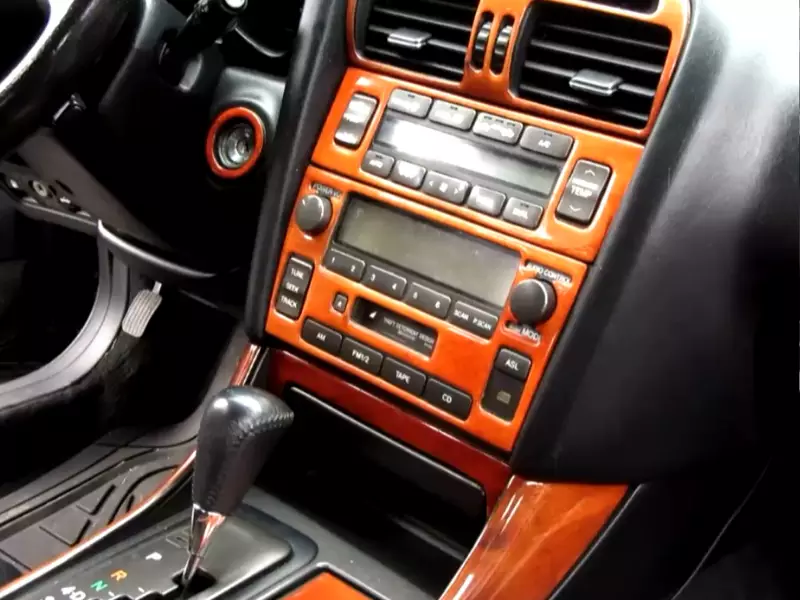
Choosing The Right Aux Cable
When it comes to installing an aux in your car, one of the most important factors to consider is choosing the right aux cable. The aux cable is responsible for connecting your device, such as your smartphone or MP3 player, to the car’s audio system, allowing you to enjoy your favorite music and podcasts during your drives. With so many options available in the market, it can be overwhelming to know which aux cable is the right fit for your needs.
Factors to consider when selecting an aux cable
Before purchasing an aux cable, there are a few key factors to consider that will help you make the best decision. These factors include:
- Length: The length of the aux cable is an important consideration to ensure it reaches your device to the car’s audio system without any limitations. Measure the distance and make sure to choose a cable that is long enough for your needs.
- Connectors: Another crucial factor to look for is the type of connectors on the aux cable. Most commonly, you will find aux cables with either a 3.5mm stereo male connector or a 3.5mm stereo male to male connector. Verify which connector type is compatible with your car’s audio system before purchasing.
- Durability: It’s essential to choose an aux cable that is durable and built to last. Look for cables that are made with high-quality materials such as nylon braided or gold-plated connectors, as these provide better protection against wear and tear.
- Price: While budget may be a consideration for many, it’s important not to compromise on quality. Look for aux cables that offer a balance between price and performance, ensuring you get a reliable cable without breaking the bank.
Different types of aux cables available in the market
When it comes to aux cables, there are various types available in the market, each offering different features and benefits. Familiarize yourself with the different types to help you make an informed decision:
| Type of Aux Cable | Description |
|---|---|
| Basic Aux Cable | A standard aux cable with a 3.5mm stereo male to male connector. |
| Braided Aux Cable | Featuring a nylon braided design, this cable offers enhanced durability and resistance to tangles. |
| Retractable Aux Cable | This type of cable can be extended and retracted to your desired length, making it convenient for storage and travel. |
| Right Angle Aux Cable | Designed with a right-angle connector, this cable is ideal for tight spaces or awkwardly positioned aux ports. |
| Bluetooth Aux Adapter | If your car’s audio system doesn’t have an aux port, a Bluetooth aux adapter allows you to connect wirelessly via Bluetooth technology. |
By understanding the different types of aux cables available and considering important factors such as length, connectors, durability, and price, you can confidently choose the right aux cable that suits your car and audio needs. So go ahead, enhance your driving experience by installing an aux cable and enjoy the freedom of endless audio possibilities.
Preparing Your Car For Aux Installation
If you’re tired of listening to the same old radio stations during your commutes, it’s time to enhance your driving experience with an aux input in your car. Installing an aux input allows you to connect your phone, MP3 player, or any other audio device directly to your car’s audio system, giving you the freedom to play your favorite songs and podcasts. Before you get started with the installation process, it’s important to prepare your car and ensure that everything is in order.
Locating the auxiliary input port in your car
The first step in preparing your car for aux installation is to locate the auxiliary input port. This port is typically found in the center console, on the dashboard, or inside the glove compartment. However, the exact location can vary depending on the make and model of your car. To find the port, you can refer to your car’s user manual or do a quick search online with the keywords “aux input port location” followed by the make and model of your car. Once you’ve located the port, make sure it is easily accessible and free from any obstructions.
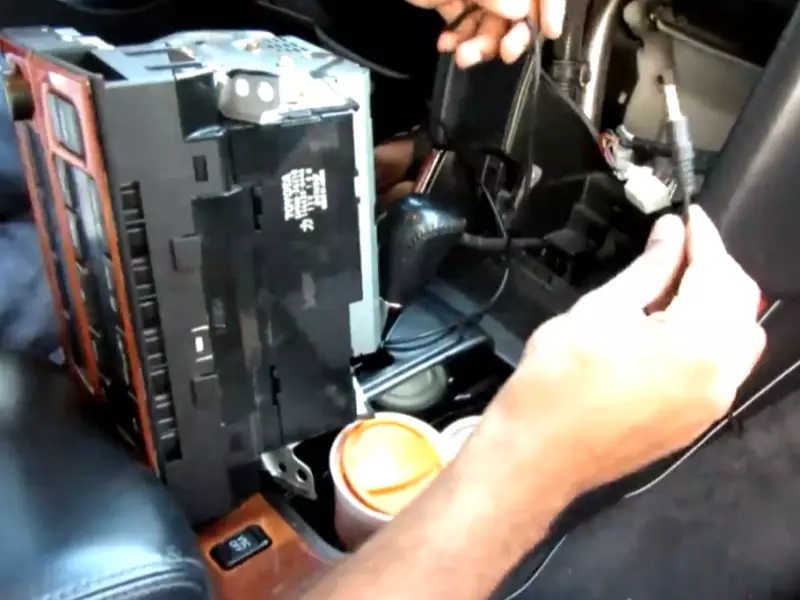
Identifying the compatible audio system
Not all car audio systems are compatible with an aux input. Some older models may not have the necessary hardware or software to support this feature. Therefore, it’s crucial to identify whether your car’s audio system is compatible before proceeding with the installation. To do this, check if your car has a “CD/AUX” or “AUX” button on the stereo or if it has an “AUX” input listed as one of the audio sources. You can also consult your car’s user manual or contact the manufacturer for more information. If your car’s audio system doesn’t have an aux input, don’t worry – there are alternative options available, such as using an FM transmitter or a Bluetooth adapter.
By preparing your car for aux installation and ensuring that you have a compatible audio system, you’ll be one step closer to enjoying your favorite music and audio content on the go. In the next section of this blog post, we’ll guide you through the actual installation process, so stay tuned!
Gathering The Necessary Tools And Materials
Installing an aux in car allows you to enjoy your favorite music or podcasts from your phone or MP3 player while driving. Before you begin the installation process, the first step is to gather all the tools and materials you will need. By having everything ready beforehand, you can ensure a smooth and hassle-free installation process.
List of tools required for the installation process
Here is a list of essential tools you will need:
| Tools |
|---|
| Screwdriver |
| Wire cutters |
| Wire strippers |
| Electrical tape |
| Heat shrink tubing |
| Electrical crimp connectors |
| Soldering iron |
Make sure you have these tools handy before you start the installation process. They are essential for a successful installation.
Recommended materials for a successful installation
Along with the tools, there are a few materials that you should have for a successful installation:
- Auxiliary cable
- Fuse tap connector
- In-line fuse holder
- Fuses
- Insulating tape
- Zip ties
- Mounting brackets (if needed)
These materials are crucial for a seamless installation process and will ensure that your aux in car system works efficiently.
Now that you have a clear list of the tools and materials required, you can move on to the next step of the installation process with confidence. Gathering and preparing everything beforehand will save you time and frustration, making the rest of the installation process much smoother.
Removing The Old Audio System (If Applicable)
Once you have gathered all the necessary tools and equipment, it’s time to dive into the installation process. But before you can install your brand new aux in-car system, you need to remove the old one (if applicable). This step is crucial to ensure a clean and seamless installation. Follow these easy steps to remove the old audio system:
Understanding the removal process of the existing audio system
The first thing you need to do is familiarize yourself with the removal process of the existing audio system. Every car model is different, so it’s important to consult the car’s manual or seek professional advice to ensure you understand the specific steps applicable to your vehicle. By having a clear understanding of the process, you can avoid any potential damage to your car’s interior.
Detaching the wiring connections from the old system
Next, you’ll want to detach the wiring connections from the old system. Before you begin, make sure to disconnect the negative terminal of your car battery to avoid any electrical mishaps. Now, carefully locate the wiring harnesses that are connected to the audio system. These harnesses are responsible for transmitting power and audio signals to the speakers. To remove them, simply unplug the connectors by gently pulling them apart. It might be helpful to label each connector to make reinstallation easier later on.
In addition to the wiring harnesses, you may also need to remove any mounting brackets or screws that are securing the old audio system in place. Utilize your tools, such as screwdrivers or pliers, to carefully loosen and remove these components. Keep track of all the screws and brackets, as you will need them when installing the new aux in car system.
Once you have successfully detached all the wiring connections and removed the mounting brackets, you can carefully extract the old audio system from your car’s dashboard. Be cautious not to force anything or cause any damage. If you encounter any difficulties during this step, it’s always best to consult a professional for guidance.
Remember: Proper removal of the old audio system is crucial for the success of your aux in car installation. Take your time and proceed with caution, ensuring you understand the removal process specific to your vehicle. By doing so, you’ll be well on your way to upgrading your car’s audio system and enjoying your favorite tunes on the road!
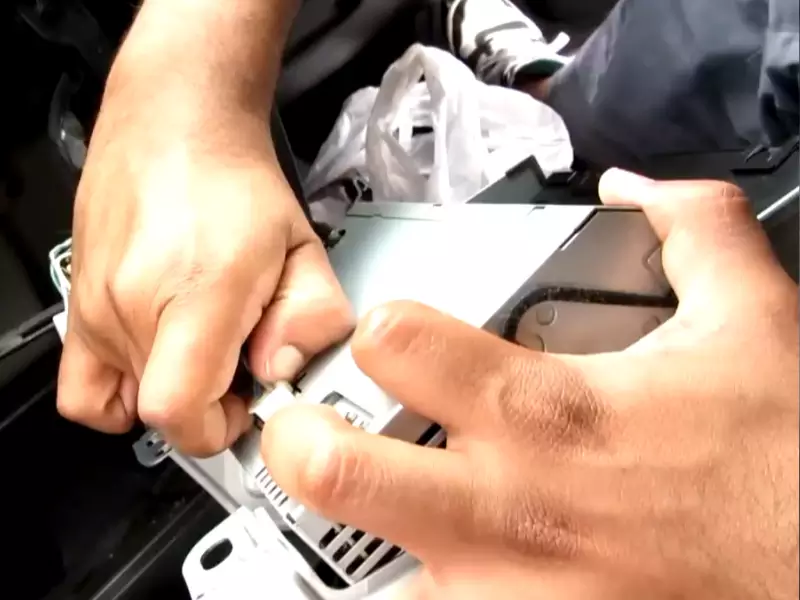
Locating And Accessing The Aux Input Port
Once you have gathered the necessary tools and purchased the appropriate aux cable, it’s time to move on to the next step: locating and accessing the aux input port in your car. This may vary depending on the make and model of your vehicle, so it’s important to understand the diverse placements of the aux input port in different car models.
Understanding the diverse placements of the aux input port in different car models
In order to successfully locate and access the aux input port in your car, it’s crucial to know where to look. The aux input port can be found in various locations inside your vehicle, depending on the manufacturer and model.
Removing car panels or console (if necessary) to access the port
In some cases, you may need to remove car panels or the center console to gain access to the aux input port. This allows you to connect your aux cable securely and ensure a proper connection for optimal audio quality during usage.
Before attempting to remove any car panels or the console, it’s important to consult the vehicle’s manual or seek professional assistance to avoid causing any damage to the interior of your car.
Once you have familiarized yourself with the location of the aux input port in your car model, follow these general steps to access the port:
- Start by finding the panel or console that covers the aux input port. This may be located on the dashboard, center console, or in the glove compartment.
- Using a suitable tool such as a panel removal tool or a flathead screwdriver covered with a cloth to prevent scratching, carefully pry the panel or console away from the surrounding area.
- Slowly lift or remove the panel until you have clear visibility and access to the aux input port.
If you encounter any difficulties or are unsure about removing any panels or the console, it’s always best to seek professional assistance. They have the experience and knowledge to handle such tasks safely.
Now that you have successfully located and accessed the aux input port in your car, you are ready to move on to the final step: connecting your device and enjoying your favorite music or audio content on the go!
Connecting The Aux Cable To The Car’S Audio System
Now that you have properly prepared both your car and the aux cable, it’s time to connect them together. Follow these steps to ensure a secure connection and minimal audio connectivity issues.
Properly Inserting the Aux Cable into the Aux Input Port
Locate the aux input port on your car’s audio system. This port is typically labeled with the letters “AUX” or a headphone icon.
- Take one end of the aux cable and carefully insert it into the aux input port. Ensure that you push it in all the way until it is firmly seated.
- If the aux cable has a protective cover or cap, remove it before inserting into the aux input port.
- Be cautious not to force the cable into the port as this may damage both the cable and the car’s audio system. Insert it gently and steadily until it fits snugly in place.
Ensuring a Secure Connection and Minimal Audio Connectivity Issues
Once the aux cable is properly inserted into the aux input port, you want to make sure the connection is secure and free from any potential audio connectivity issues.
- Check the connection by gently tugging on the cable. It should be snugly connected without any looseness. If it feels loose, remove the cable and reinsert it, making sure to push it in as far as it will go.
- Avoid any sharp bends or kinks in the cable as this can interfere with the audio signal and cause poor sound quality. Make sure the cable lies flat and doesn’t have any twists or knots.
- If you experience any audio connectivity issues, such as static, crackling sounds, or intermittent playback, try adjusting the cable or reinserting it into the aux input port.
- In some cases, using a high-quality aux cable can improve audio connectivity and reduce any potential issues. Consider investing in a reputable brand known for its durable and reliable cables.
Following these steps will help you to properly connect your aux cable to your car’s audio system, ensuring a secure and uninterrupted listening experience. Now that your aux cable is connected, you are ready to enjoy your favorite music, podcasts, or audiobooks during your car journeys!
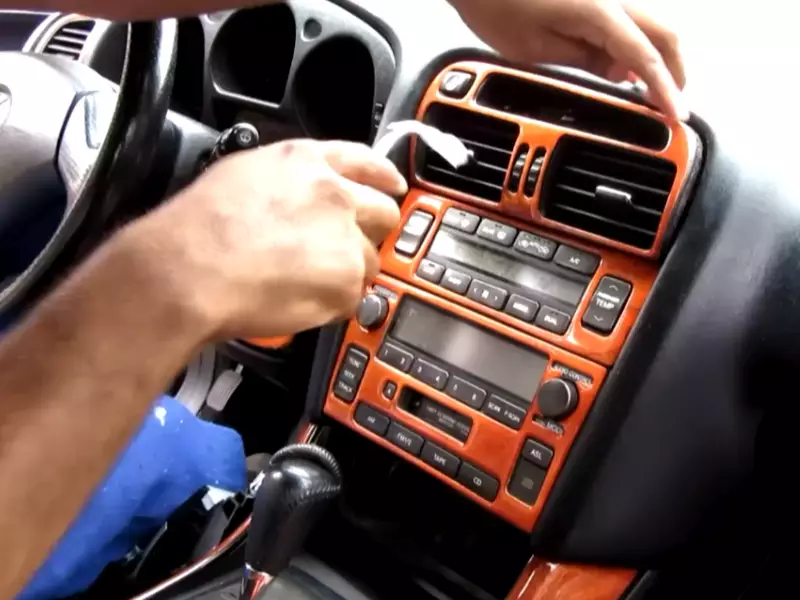
Testing The Audio Connectivity
Now that you have successfully installed the aux cable in your car, it’s time to test the audio connectivity and make sure everything is working as expected. This step will help you verify that the aux cable is functioning correctly and troubleshoot any common audio issues that may arise. Follow the steps below to ensure a seamless and enjoyable listening experience in your car.
Verifying that the aux cable is functioning correctly
Before you start testing the audio connectivity, it’s essential to verify that the aux cable you installed is functioning correctly. Follow these steps to ensure everything is in proper working order:
- Ensure the aux cable is securely connected to both your car’s audio system and the device you will be using, such as your smartphone or MP3 player.
- Turn on your car’s audio system and set it to the auxiliary or aux input mode. This mode may vary depending on your car’s make and model. Refer to your car’s manual if you’re unsure how to access the aux input mode.
- Play some audio on the connected device and gradually increase the volume to check if the sound is coming through the car’s speakers. If you don’t hear any sound or experience any distortion, there may be an issue with the aux cable connection.
- If you suspect a connection issue, try disconnecting and reconnecting the aux cable. Make sure it is firmly inserted into both the audio system and the device.
- If the issue persists, try using a different aux cable to determine if the problem lies with the cable itself. Sometimes, faulty or damaged cables can cause audio connectivity problems.
Troubleshooting common audio issues
While testing the audio connectivity, you may come across some common audio issues. Here are a few troubleshooting tips to help you address these problems:
| Issue | Possible Solution |
|---|---|
| No sound or low volume | Ensure both the audio system and the connected device’s volume are set to an appropriate level. Check if the mute function is enabled on either the device or the car’s audio system. |
| Audio distortion or static | Inspect the aux cable for any signs of damage or fraying. Replace the cable if needed. Additionally, ensure a strong and stable connection by checking the cable’s contacts for dirt or debris and cleaning them if necessary. |
| Interference from other devices | Some electronic devices, such as smartphones or tablets, can cause interference with the audio signal. Try moving these devices away from the aux cable or turning them off to see if the interference resolves. |
| One channel not working | If audio only comes through one side or channel of your car’s speakers, check if the aux cable is securely connected. Additionally, test with another device to determine if the issue lies with the cable or the device itself. |
By verifying the proper functioning of the aux cable and troubleshooting common audio issues, you can ensure a seamless audio experience in your car. Enjoy your favorite music or podcasts while cruising down the road!
Securing The Aux Cable In The Car
Now that you have successfully connected the aux cable to your car’s audio system, it’s essential to secure the cable properly to prevent tangling and interference. In this step, we will discuss the proper cable management techniques to ensure a clean and professional appearance in your car.
Proper cable management techniques to prevent tangling and interference
When it comes to managing cables in your car, tidiness is key. Messy, tangled cables not only look unprofessional but can also cause interference in the audio signal. Follow these proper cable management techniques to prevent tangling and interference:
- Locate a suitable spot in your car to secure the aux cable. Some common options include the center console, glove compartment, or the dashboard.
- Make sure the chosen spot is easily accessible for connecting and disconnecting devices.
- Use cable clips or adhesive cable organizers to secure the cable along the path from the audio source to the chosen spot. This will keep the cable in place and prevent it from getting tangled with other wires.
- Avoid running the aux cable near power cables or other sources of electromagnetic interference. This will help minimize any interference that could affect the audio quality.
- If necessary, use cable ties or Velcro straps to bundle any excess cable length neatly. This will prevent the cable from hanging loose and getting in the way.
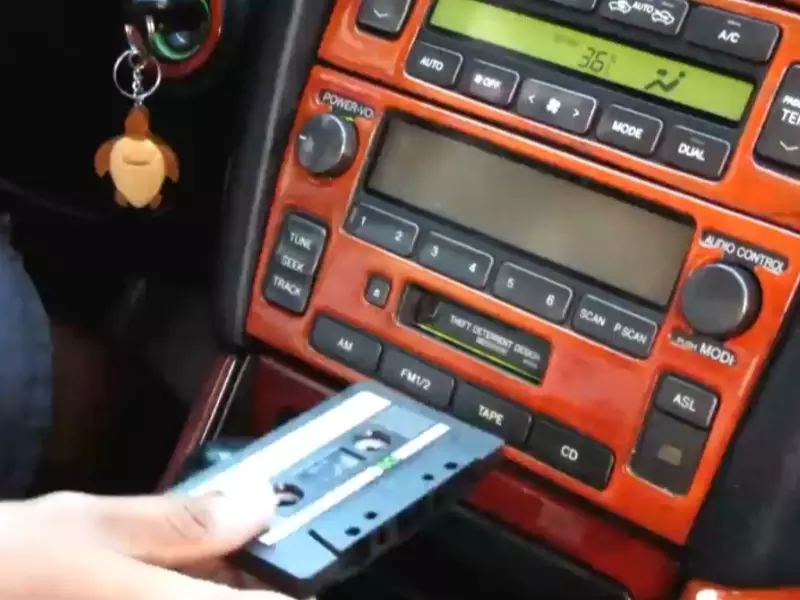
Securing the aux cable to maintain a clean and professional appearance
In addition to preventing tangling and interference, securing the aux cable properly will ensure a clean and professional appearance in your car. Follow these steps to maintain a tidy and organized look:
- Ensure that the aux cable is not visible, and the connections are hidden from plain sight. This will give your car’s interior a cleaner and more streamlined look.
- If your car has specific cable routing channels or hidden compartments, utilize them to hide the aux cable for an even neater appearance.
- For a more permanent and secure solution, consider using cable management devices such as cable raceways or conduits. These can be installed discreetly in your car’s interior, keeping the aux cable out of sight while maintaining a professional look.
By implementing these cable management techniques and securing the aux cable properly, you can enjoy a clutter-free and aesthetically pleasing audio setup in your car.
Tips For Optimizing The Aux Music Experience In Your Car
Adjusting Audio Settings for the Best Sound Quality
When using an aux cable to play music in your car, it’s important to adjust the audio settings to ensure the best sound quality. Follow these tips to enhance your listening experience:
- Bass and treble adjustments: Experiment with the bass and treble settings in your car’s audio system to find the perfect balance. Boosting the bass can add depth to your music while adjusting the treble can improve clarity.
- Equalizer settings: If your car stereo has an equalizer, take advantage of it. This feature allows you to fine-tune the audio frequencies to suit your preferences. Play around with the different presets or create your own custom settings.
- Volume normalization: Some audio players or apps offer volume normalization options. Enabling this feature ensures that all songs are played at a consistent volume level, preventing abrupt volume shifts between tracks.
Utilizing Aux Cable Accessories to Further Enhance the Music Experience
In addition to adjusting audio settings, there are various aux cable accessories available that can further enhance your music experience. Consider these options:
- Quality aux cable: Invest in a high-quality aux cable. A good cable can minimize interference and distortion, resulting in better audio quality.
- Noise-canceling adapter: If you frequently experience background noise or interference, consider using a noise-canceling adapter. This accessory filters out unwanted sounds, allowing you to enjoy your music without distractions.
- Aux jack extension: If your car’s aux jack is inconveniently located, an aux jack extension can solve this problem. It allows you to place the aux cable within easy reach, making it more convenient to connect your music device.
By optimizing your audio settings and utilizing these aux cable accessories, you can elevate your car’s aux music experience. Enjoy your favorite tunes with enhanced sound quality and minimal distractions!
Troubleshooting Common Issues With Aux Installation
If you’re eager to enjoy your favorite tunes on the road, installing an aux connection in your car is a great idea. However, like any other installation process, there may be a few hurdles along the way. Don’t worry, though – we’ve got you covered! In this section, we’ll explore some common issues you might face during the aux installation process and provide troubleshooting tips to help you overcome them.
Identifying and Resolving Audio Connectivity Issues
One of the most common problems encountered when installing an aux connection is audio connectivity issues. These issues can manifest in various ways, such as no sound output, distorted sound, or intermittent audio playback. To ensure a seamless audio experience, it’s essential to address these issues promptly. Here are a few troubleshooting steps you can follow:
- Check the aux cable for any signs of damage, including frayed wires or bent connectors. Replace the cable if necessary, as damaged cables can disrupt audio transmission.
- Ensure that both ends of the aux cable are securely plugged into the correct ports. Loose connections can result in poor audio quality or no sound at all.
- Inspect the audio settings on your car’s entertainment system. Make sure the volume level is adequate and not muted. Adjust the audio balance settings if necessary.
- Try connecting your device to a different auxiliary input port in your car, if available. Sometimes, a faulty port can be the culprit behind audio connectivity issues.
- Restart both your car’s entertainment system and the connected device. This simple step can often resolve temporary glitches and restore audio functionality.
- If none of the above steps work, consider testing your device with a different aux cable or connecting another device to your car’s system. This will help narrow down whether the issue lies with your device or the car’s audio system.
Dealing with Compatibility Problems with Older Car Models
Older car models may present compatibility challenges when it comes to aux installations. These models might not have built-in aux input ports, making it difficult to connect external audio sources. However, don’t lose hope! Here are a few workarounds to overcome compatibility issues with older car models:
- Invest in an FM transmitter: An FM transmitter allows you to wirelessly transmit audio from your device to your car’s FM radio. Simply tune in to the desired frequency on your car’s radio and enjoy your favorite songs without the need for an aux input.
- Consider a cassette adapter: If your car still has a cassette player, you can utilize a cassette adapter. These adapters feature an aux cable that connects to your device’s headphone jack and plays audio through your car’s cassette player.
- Install an aftermarket audio system: If you’re willing to invest in a more comprehensive solution, installing an aftermarket audio system can provide you with more connectivity options. These systems often include aux input ports and can be tailored to fit your car’s requirements.
By following these troubleshooting tips, you’ll be well-equipped to tackle common issues during the installation of an aux connection in your car. Remember, persistence and experimentation are key when it comes to resolving any technical difficulties. Happy listening!
Frequently Asked Questions Of How To Install Aux In Car
Can You Install An Aux Into A Car?
Yes, you can install an AUX in your car. It allows you to connect and play music from devices like smartphones or MP3 players through the car’s audio system. Professional installation or using DIY kits are the options available.
Can You Add Aux To A Car That Doesn’t Have It?
Yes, it is possible to add an aux port to a car that doesn’t have one. This can be done by using an FM transmitter or by installing an aftermarket stereo with an aux input.
How Do I Connect My Phone To My Old Car Aux?
To connect your phone to an old car aux, plug one end of a 3. 5mm aux cable into your phone’s headphone jack and the other end into your car’s aux input. Adjust the volume on both devices and you’re good to go!
How Do I Set My Car Stereo To Aux?
To set your car stereo to aux, locate the aux button or input on the stereo interface. Press the aux button or select the aux input option. Connect your device, such as a phone or MP3 player, to the stereo using an auxiliary cable.
Adjust the volume and enjoy your music.
Conclusion
To sum up, installing an aux in car can greatly enhance your driving experience by allowing you to play your favorite music from your phone or other devices. With the simple steps outlined in this guide, you can easily set up an aux connection in your car and enjoy high-quality sound on the go.
Remember to follow the instructions carefully and always prioritize safety. So go ahead and bring your own personal soundtrack to your next road trip!
